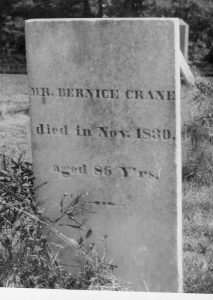 Memorial Day comes with many family duties. In our family, although I am now the only one who lives in the state where the bulk of our family members are buried, the duty falls on my brother and his wife, who come up from Florida for the summer and stay with her family. (They live closer to the cemeteries.) John and Jan visit each grave, prune rhododendron bushes planted by my grandmother 70 years ago, clear off gravestones, and plant flowers. They then e-mail digital photos to the family. Continue reading Memorials
Memorial Day comes with many family duties. In our family, although I am now the only one who lives in the state where the bulk of our family members are buried, the duty falls on my brother and his wife, who come up from Florida for the summer and stay with her family. (They live closer to the cemeteries.) John and Jan visit each grave, prune rhododendron bushes planted by my grandmother 70 years ago, clear off gravestones, and plant flowers. They then e-mail digital photos to the family. Continue reading Memorials
Category Archives: American History
At the margin

One of the joys of old photographs is the occasional detail, the one that hovers at the margin, away from the central feature of the image. Looking through one of my grandmother’s albums – helpfully marked “Vol. 1,” although I’m not sure there are any subsequent ones in the series – I’m struck by the horses and cars (even the occasional ostrich) that coexist with the people peopling the photographs. My grandmother’s family was considered very “horsey,” and they were happy to be associated with their powerful cars – and I think there is a bit of a story to be found in these images. Continue reading At the margin
“The dear old lady”
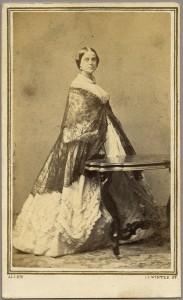
Boston, Saturday, 18 May 1861: These two or three clear days have helped Morris[2] a good deal – he drives often, and walks twice a day with me. I shall be known as “the woman that follows the drill” ere long, for he trudges after each company all over the parade ground [on Boston Common], and his military accoutrements attract no little attention to his poor pale face…
A report is very current to-day that Gen.l Beauregard[3] has died of wounds rec’d at the attack on Sumter. Somebody has heard somebody’s letter read, giving an acct. of his funeral!! Continue reading “The dear old lady”
Some super-centenarians
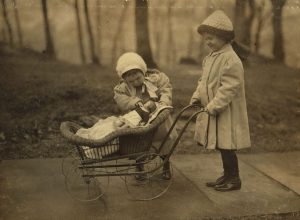
Susannah Mushatt Jones, who died in Brooklyn, New York on 12 May 2016 at the advanced age of 116 years and 311 days, was (at her death) the oldest verified living person in the world. Susannah was born at Lowndes County, Alabama, on 6 July 1899, a daughter of Callie and Mary Mushatt. Her parents were African-American sharecroppers and her grandmother was an ex-slave. There have been many Americans over the years who were super-centenarians (living past their 110th birthdays), but with Susannah’s death a door in American history now closes. Continue reading Some super-centenarians
The House Beautiful

The New England Historic Genealogical Society is rediscovering many treasures within its Atkinson-Lancaster Collection, an eclectic assemblage of art that came to the Society in 1933 from the Atkinson family of Newburyport, Massachusetts. The Atkinsons made their fortune in the nineteenth-century India trade. We’ve just rehung the Treat Rotunda (Figure 1) with pieces from the collection, including two lovely celadon-and-cream-colored nineteenth-century Chinese garden seats (Figure 2, below). Continue reading The House Beautiful
The Babson brood
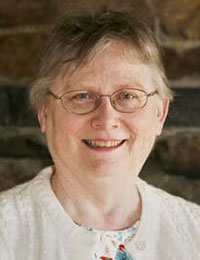 The Babson Historical Association is preparing an updated Babson Genealogy for publication in 2017. The Babsons are unique in several ways.
The Babson Historical Association is preparing an updated Babson Genealogy for publication in 2017. The Babsons are unique in several ways.
First, they are one of the few families descended from a Great Migration matriarch who came to New England without a husband. Isabel Babson came to Salem in 1637 with her sons Richard and James. Her husband, Thomas Babson, had died in England. A married daughter – Joan, wife of John Collins – came with her husband shortly thereafter. Son Richard returned to England permanently and had four children we know of, but we have not traced any of the English descendants. Continue reading The Babson brood
A final resting place
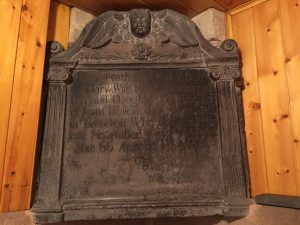 In the virtual world of genealogy, one can easily go to www.findagrave.com or www.billiongraves.com and record a gravestone – or simply pay respects to an ancestor’s gravestone. This technology has made it possible for countless genealogists to virtually visit or search gravestones thousands of miles away. This technology can also be utilized by apps designed for your smartphone.
In the virtual world of genealogy, one can easily go to www.findagrave.com or www.billiongraves.com and record a gravestone – or simply pay respects to an ancestor’s gravestone. This technology has made it possible for countless genealogists to virtually visit or search gravestones thousands of miles away. This technology can also be utilized by apps designed for your smartphone.
What about the gravestone no longer located in its original cemetery? When I first started working on my book A Guide to Massachusetts Cemeteries in 1987, I made inquiries into cemeteries throughout the Commonwealth of Massachusetts. Strange stories of abandoned gravestones located on stone walls or at historical societies became a database in their own right. Continue reading A final resting place
The little black book
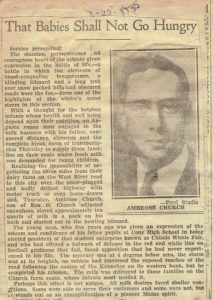 One of the most thoughtful gifts my son has ever given me is a small, black journal with blank pages which I carry with me every day. Kevin’s instructions to me at the time were to write down my memories as well as my family’s memories and stories. His good intentions became my inspiration and abiding interest, my focus in my family history research, and my obligation. Scribbling madly, I started asking for stories to preserve for our following generations.
One of the most thoughtful gifts my son has ever given me is a small, black journal with blank pages which I carry with me every day. Kevin’s instructions to me at the time were to write down my memories as well as my family’s memories and stories. His good intentions became my inspiration and abiding interest, my focus in my family history research, and my obligation. Scribbling madly, I started asking for stories to preserve for our following generations.
I soon understood that there is a significant difference between stories and memories. Memories are the foundation and basis for the stories they may become as time puts them in a different context. While some are skeletons in the making, our family stories give us a better understanding of our ancestors’ characters and their perspectives on their world, as well as some insight into their actions and motivations. Continue reading The little black book
Death by hiccups
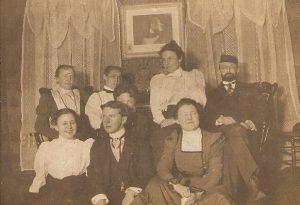
When beginning genealogical research, we learn about the types of records that are likely to contain the information we seek and where those records might be located, i.e. in what repository. What we sometimes fail to appreciate, however, is the value of a stash of family materials – letters, diaries, newspaper clippings – that can hold the answer to our questions. Case in point: my great-grandfather’s cause of death.
As an inquisitive 12-year-old, I once asked my grandmother if she knew how her father had died, since he had passed away four months before she was born. “Oh, he died from the hiccups,” she replied. Continue reading Death by hiccups
The Centennial of the Easter Rising
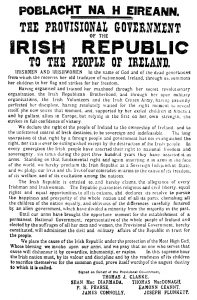
At Easter 2016, Ireland commemorated a seminal event in its struggle for independence, the Easter Rising of April 24–30, 1916. Led by men and women from the Irish Republican Brotherhood, the Irish Volunteers and Cumann na mBan, about 1,200 rebels seized several key buildings in Dublin. With artillery and 16,000 troops, the British quickly overwhelmed the Irish insurrection, and the leaders captured and executed.
One leader, Thomas Kent of Castlelyons, County Cork, and his brothers had organized a branch of the Irish Volunteers in Castleyons in 1914. Thomas Kent was not in Dublin during the rebellion, but stayed away from home hoping to mobilize the Volunteers. When he returned home, the Royal Irish Constabulary (police) surrounded his house on May 2, 1916. Continue reading The Centennial of the Easter Rising